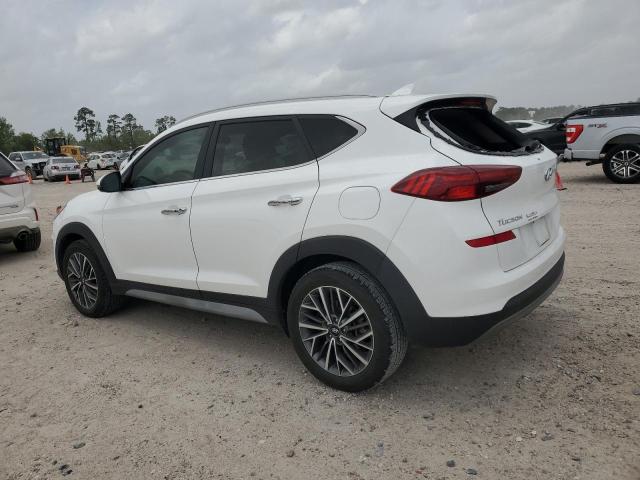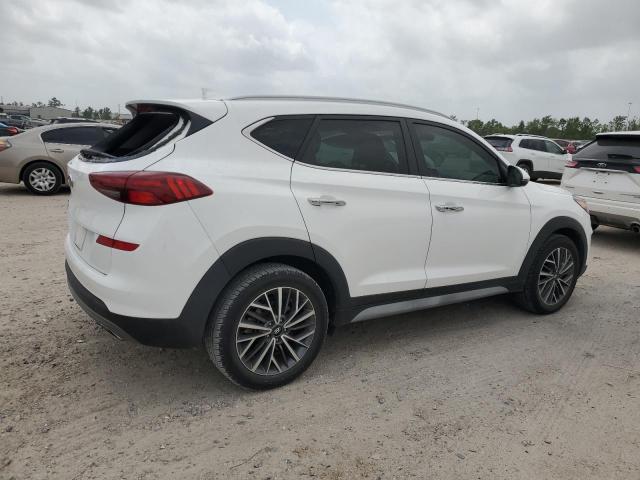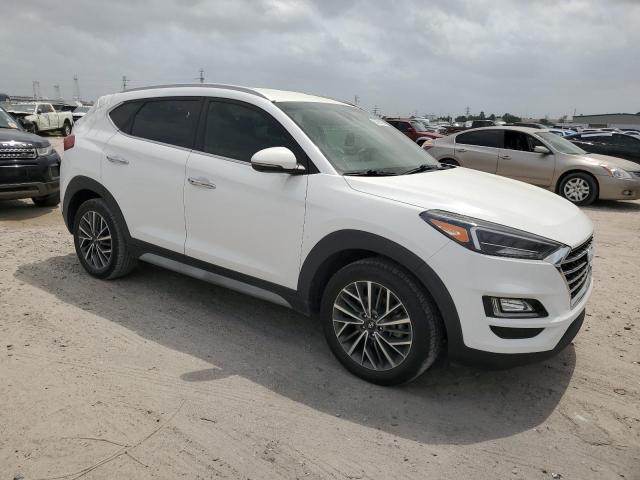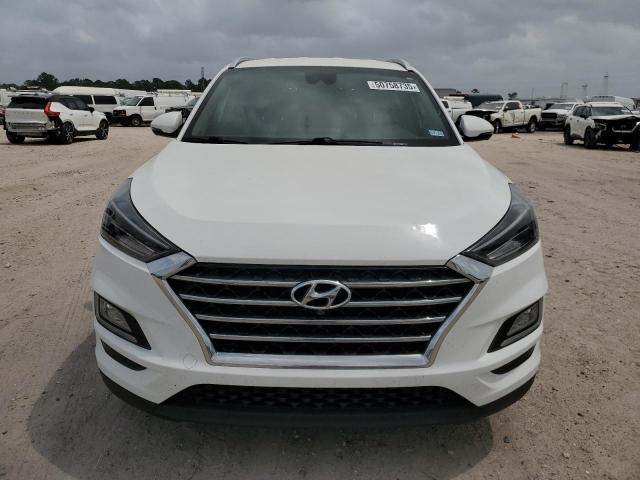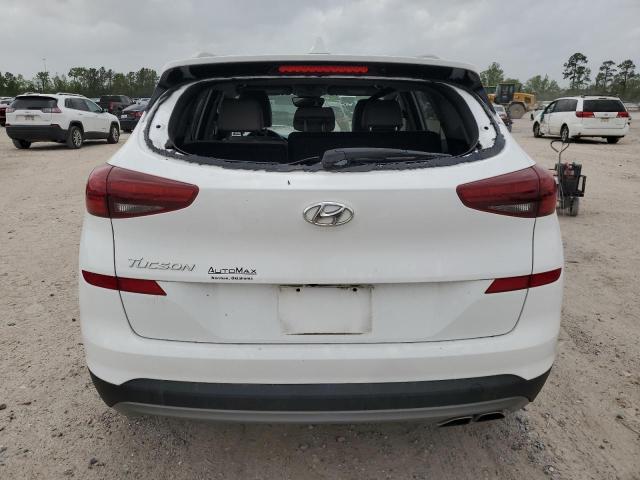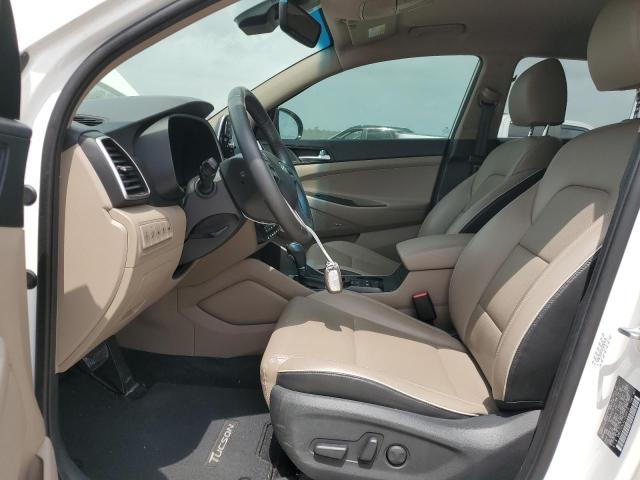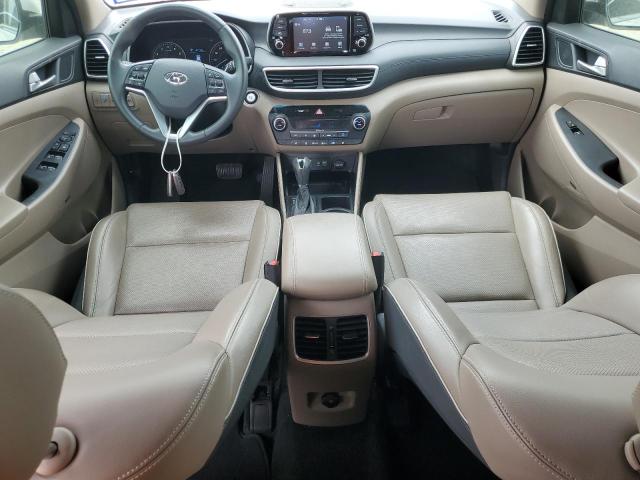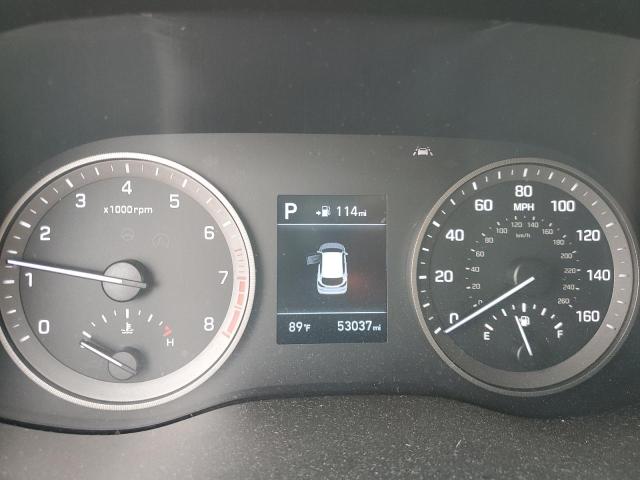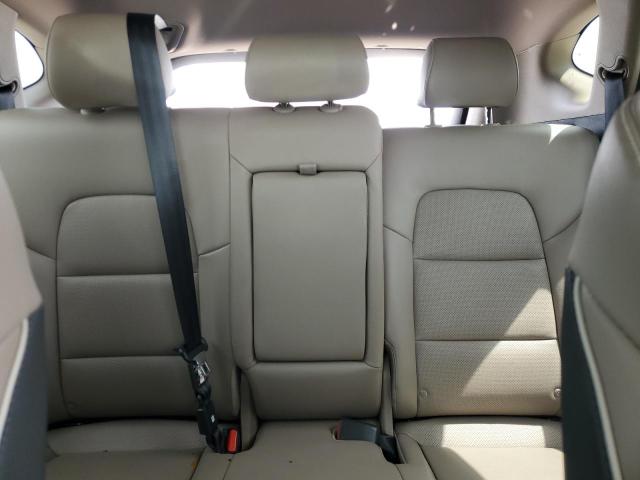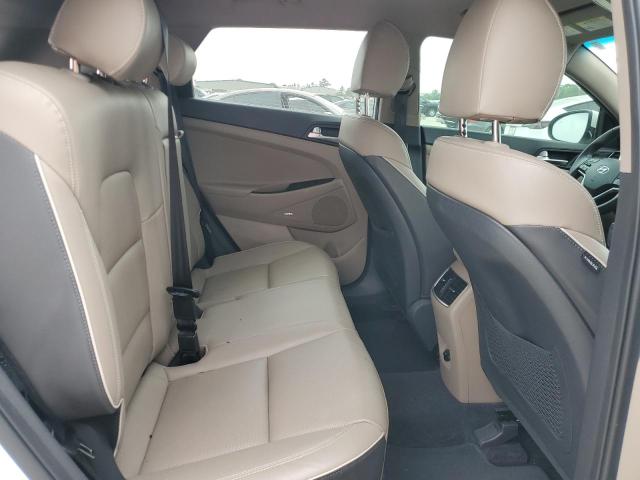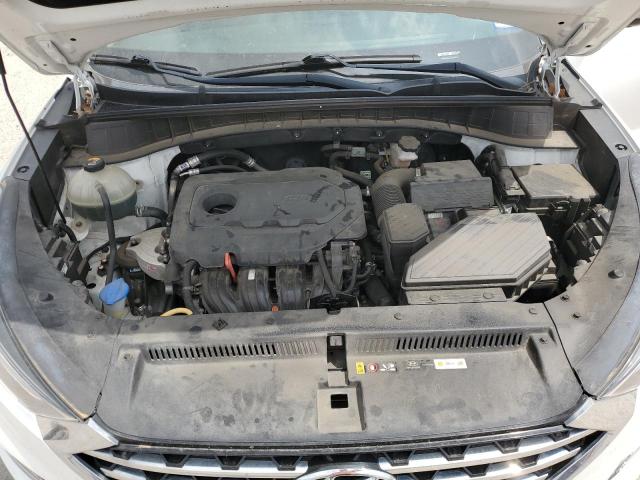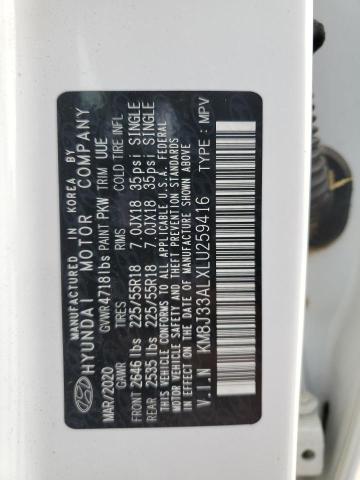2020 HYUNDAI TUCSON | KM8J33ALXLU259416
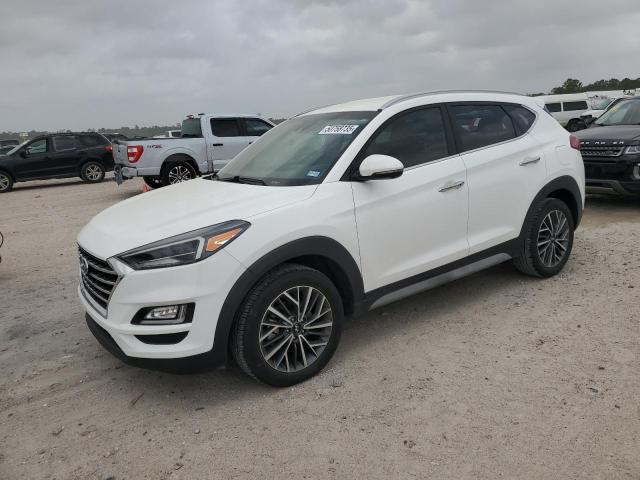 ❯
❯
Specifications
3
~$35,000
Engine: 2.4L naturally aspirated I4
Torque: 242 Nm
0–100 km/h: : ~8.0 s
The third-generation Hyundai Tucson emphasized comfort, value, and design refinement, but it also offered notable performance in its upper trims. The most powerful variant, equipped with a 2.4L naturally aspirated four-cylinder engine producing 181 hp and 242 Nm of torque, delivered confident power and 0–100 km/h acceleration in about 8.0 seconds. Turbocharged 1.6L variants offered slightly better low-end punch and fuel economy but were tuned more for efficiency than outright speed.
Handling was composed and secure, with a fully independent suspension setup and responsive electric power steering. AWD variants enhanced traction in all conditions and contributed to neutral, stable behavior through turns. While not aimed at enthusiasts, the Tucson offered precise cornering and a smooth, controlled ride even at highway speeds. The Sport trim with larger wheels and firmer tuning delivered a more confident feel, balancing comfort with mild athleticism.
Though not a performance SUV, the Tucson held its own with strong highway composure, responsive steering, and enough power to inspire confidence during daily driving. Its versatility, quiet cabin, and clean handling made it one of the more refined options in the compact crossover segment — especially for buyers who wanted a bit more muscle in a sleek, premium-feeling wrapper.
Body Styles
The Hyundai Tucson was available exclusively as a five-door compact SUV. It featured clean, mature proportions with a prominent hexagonal grille, sharp body lines, and sleek wraparound headlights. The design became progressively more sophisticated with each model year, with facelifted versions introducing LED daytime running lights, updated bumpers, and chrome details. The rising beltline and short rear overhang gave the Tucson a dynamic stance, while a wide rear window and integrated spoiler preserved visibility and practicality. Roof rails, faux skid plates, and pronounced fender flares added subtle rugged cues.
Model Name Meaning (Manufacturer)
The name “Tucson” refers to the city in Arizona, a region known for its blend of urban activity and desert landscapes. Hyundai chose the name to convey a sense of rugged capability and adventure while still emphasizing the SUV’s urban relevance and versatility — bridging lifestyle with practicality.
Model Name Meaning (Languages)
“Tucson” is a proper noun rooted in Native American origins, often interpreted to mean “at the base of the black hill” in the O’odham language. In popular usage, it’s associated with the southwestern U.S. and evokes warmth, openness, and a spirit of exploration. The name’s soft phonetics and cultural familiarity make it both aspirational and approachable for a global market.
Body & Interior Colors and Rims
The Tucson was offered in a tasteful palette including Coliseum Gray, Dusk Blue, Gemstone Red, Black Noir Pearl, White Pearl, and Stellar Silver. The post-2019 facelift introduced new finishes like Sage Brown and Aqua Blue. Exterior accents like chrome door handles, LED lighting signatures, and contrasting skid plates varied by trim. The Night and Sport trims introduced blackout elements, larger wheels, and dark grille treatments for a more aggressive look.
Inside, the Tucson ranged from practical black or beige cloth in base trims to leather-appointed seats in Limited and Ultimate versions. Interior themes included Graystone, Beige, and Black, with tasteful use of brushed metal, gloss black, or soft-touch textured plastics. The 2020–2021 models upgraded the dashboard design with a floating infotainment display and improved button layout, giving the cabin a cleaner, more modern appearance.
Wheel options ranged from 17-inch silver alloys on SE and Value trims to 19-inch dark satin wheels on Sport and Limited trims. The design language was crisp and technical, with multiple split-spoke and turbine-inspired patterns. High-trim wheels featured machined faces with gloss black or gunmetal inlays, completing the Tucson’s upscale crossover aesthetic.
Top Expensive Options
- 2.4L Engine Upgrade with AWD: $1,800
- Ultimate Package with Navigation & Smart Cruise Control: $2,750
- Infinity Premium Audio with Subwoofer & Amp: $850
- Panoramic Sunroof with Power Shade: $1,200
- Leather Seating with Ventilation and Memory: $1,500
- 8-Inch Touchscreen with Built-in Navigation: $900
- Smart Hands-Free Power Liftgate: $600
- LED Headlights and Taillights (Ultimate trim): $1,000
- Surround View Monitor with Rear Cross-Traffic Alert: $950
- 19-inch Alloy Wheels with Dark Finish (Sport trim): $1,100
vs Competitors
The Tucson faced off against top sellers like the Toyota RAV4, Honda CR-V, Nissan Rogue, Mazda CX-5, and Subaru Forester. While the RAV4 and CR-V emphasized efficiency and cargo space, the Tucson offered more refined ride quality, better cabin insulation, and stronger warranty coverage. Against the Mazda CX-5, the Tucson matched interior design quality and tech features, though it lagged in dynamic handling. Compared to the Subaru Forester, the Tucson offered better on-road comfort and quieter ride, albeit with less off-road capability. Its strongest advantages were value, reliability, and premium features at competitive pricing — particularly in top trims, where it nearly entered entry-luxury territory without the premium badge.
Fun Fact
The Hyundai Tucson was one of the first vehicles in its segment to offer a hands-free smart liftgate that opened automatically when you stood behind it with the key fob — no foot waving required. This simple, intuitive feature — once exclusive to luxury brands — helped redefine expectations for everyday convenience in the compact SUV class, contributing to Tucson’s popularity among urban families and tech-savvy buyers.
Lot Details
-
Sale Date13/Jun/2025
-
Lot Number50758735
-
Sale document
-
Location
-
Odometer53,037 miles (85,355 km)
-
Primary Damage:HAIL
-
Secondary DamageMINOR DENT/SCRATCHES
-
Seller
-
Fuel
-
Engine Type2.4L 4
-
Transmission
-
Drive Type
-
Color
Final Bid Hyundai Tucson (2020)
$11,300
$11,300
$11,300
Specifications
3
~$35,000
Torque:
0–100 km/h:
The third-generation Hyundai Tucson emphasized comfort, value, and design refinement, but it also offered notable performance in its upper trims. The most powerful variant, equipped with a 2.4L naturally aspirated four-cylinder engine producing 181 hp and 242 Nm of torque, delivered confident power and 0–100 km/h acceleration in about 8.0 seconds. Turbocharged 1.6L variants offered slightly better low-end punch and fuel economy but were tuned more for efficiency than outright speed.
Handling was composed and secure, with a fully independent suspension setup and responsive electric power steering. AWD variants enhanced traction in all conditions and contributed to neutral, stable behavior through turns. While not aimed at enthusiasts, the Tucson offered precise cornering and a smooth, controlled ride even at highway speeds. The Sport trim with larger wheels and firmer tuning delivered a more confident feel, balancing comfort with mild athleticism.
Though not a performance SUV, the Tucson held its own with strong highway composure, responsive steering, and enough power to inspire confidence during daily driving. Its versatility, quiet cabin, and clean handling made it one of the more refined options in the compact crossover segment — especially for buyers who wanted a bit more muscle in a sleek, premium-feeling wrapper.
Body Styles
The Hyundai Tucson was available exclusively as a five-door compact SUV. It featured clean, mature proportions with a prominent hexagonal grille, sharp body lines, and sleek wraparound headlights. The design became progressively more sophisticated with each model year, with facelifted versions introducing LED daytime running lights, updated bumpers, and chrome details. The rising beltline and short rear overhang gave the Tucson a dynamic stance, while a wide rear window and integrated spoiler preserved visibility and practicality. Roof rails, faux skid plates, and pronounced fender flares added subtle rugged cues.
Model Name Meaning (Manufacturer)
The name “Tucson” refers to the city in Arizona, a region known for its blend of urban activity and desert landscapes. Hyundai chose the name to convey a sense of rugged capability and adventure while still emphasizing the SUV’s urban relevance and versatility — bridging lifestyle with practicality.
Model Name Meaning (Languages)
“Tucson” is a proper noun rooted in Native American origins, often interpreted to mean “at the base of the black hill” in the O’odham language. In popular usage, it’s associated with the southwestern U.S. and evokes warmth, openness, and a spirit of exploration. The name’s soft phonetics and cultural familiarity make it both aspirational and approachable for a global market.
Body & Interior Colors and Rims
The Tucson was offered in a tasteful palette including Coliseum Gray, Dusk Blue, Gemstone Red, Black Noir Pearl, White Pearl, and Stellar Silver. The post-2019 facelift introduced new finishes like Sage Brown and Aqua Blue. Exterior accents like chrome door handles, LED lighting signatures, and contrasting skid plates varied by trim. The Night and Sport trims introduced blackout elements, larger wheels, and dark grille treatments for a more aggressive look.
Inside, the Tucson ranged from practical black or beige cloth in base trims to leather-appointed seats in Limited and Ultimate versions. Interior themes included Graystone, Beige, and Black, with tasteful use of brushed metal, gloss black, or soft-touch textured plastics. The 2020–2021 models upgraded the dashboard design with a floating infotainment display and improved button layout, giving the cabin a cleaner, more modern appearance.
Wheel options ranged from 17-inch silver alloys on SE and Value trims to 19-inch dark satin wheels on Sport and Limited trims. The design language was crisp and technical, with multiple split-spoke and turbine-inspired patterns. High-trim wheels featured machined faces with gloss black or gunmetal inlays, completing the Tucson’s upscale crossover aesthetic.
Top Expensive Options
- 2.4L Engine Upgrade with AWD: $1,800
- Ultimate Package with Navigation & Smart Cruise Control: $2,750
- Infinity Premium Audio with Subwoofer & Amp: $850
- Panoramic Sunroof with Power Shade: $1,200
- Leather Seating with Ventilation and Memory: $1,500
- 8-Inch Touchscreen with Built-in Navigation: $900
- Smart Hands-Free Power Liftgate: $600
- LED Headlights and Taillights (Ultimate trim): $1,000
- Surround View Monitor with Rear Cross-Traffic Alert: $950
- 19-inch Alloy Wheels with Dark Finish (Sport trim): $1,100
vs Competitors
The Tucson faced off against top sellers like the Toyota RAV4, Honda CR-V, Nissan Rogue, Mazda CX-5, and Subaru Forester. While the RAV4 and CR-V emphasized efficiency and cargo space, the Tucson offered more refined ride quality, better cabin insulation, and stronger warranty coverage. Against the Mazda CX-5, the Tucson matched interior design quality and tech features, though it lagged in dynamic handling. Compared to the Subaru Forester, the Tucson offered better on-road comfort and quieter ride, albeit with less off-road capability. Its strongest advantages were value, reliability, and premium features at competitive pricing — particularly in top trims, where it nearly entered entry-luxury territory without the premium badge.
Fun Fact
The Hyundai Tucson was one of the first vehicles in its segment to offer a hands-free smart liftgate that opened automatically when you stood behind it with the key fob — no foot waving required. This simple, intuitive feature — once exclusive to luxury brands — helped redefine expectations for everyday convenience in the compact SUV class, contributing to Tucson’s popularity among urban families and tech-savvy buyers.

